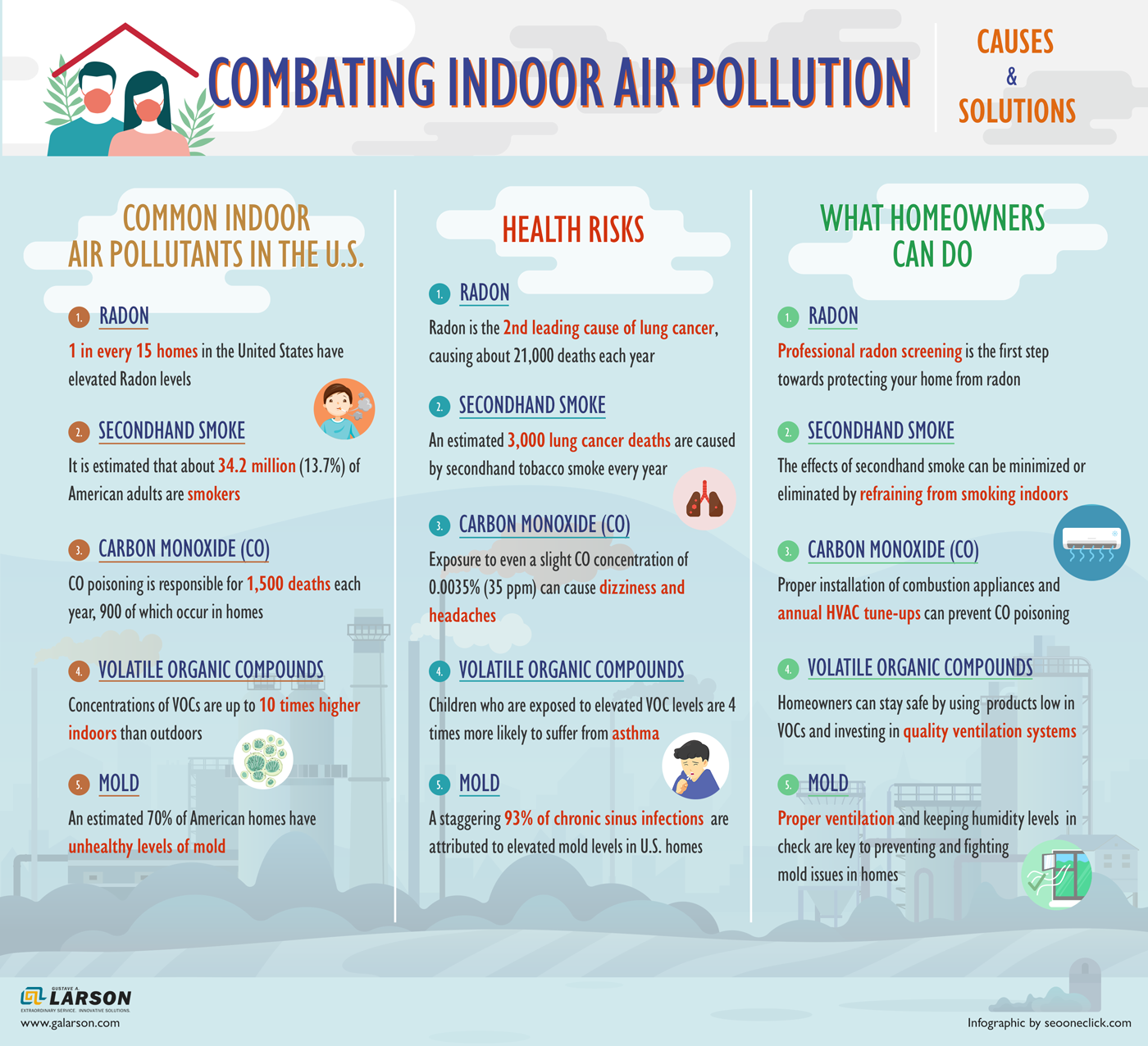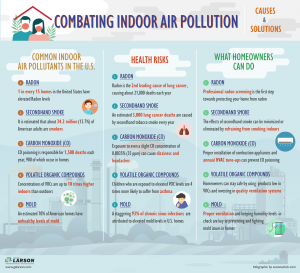Considering the fact that Americans spend as much as 90% of their time indoors, poor indoor air quality is a definite cause for concern. In fact, the quality of air inside our homes can be 2 to 5 times more polluted than outdoor air. The situation starts to seem even direr when we consider that indoor pollution of air is a leading risk factor for premature death globally, causing 1.6 million deaths every year.

Table of Contents
What makes indoor pollution of air?
There are numerous pollutants that may cause concern for U.S. homeowners. According to HVAC and ventilation experts, some of the leading sources of poor indoor air include:
- Combustion byproducts (CO, secondhand tobacco smoke, particulate matter)
- Natural substances (mold, pet dander, radon)
- Volatile organic compounds (VOCs) from various materials, products, & processes
- Asbestos, lead, and pesticides
Although most indoor air pollutants come from indoor sources, some of them might come from outdoors, through open windows, doors, and HVAC systems.
How we can combat indoor pollution of air & ensure a healthier future

Fortunately, homeowners have a variety of possible solutions to choose from when it comes to improving indoor air. The CDC and EPA suggest:
- Improving ventilation
- Removing air pollution sources
- Installing air cleaners
- Replacing air filters regularly
- Maintaining optimal moisture & humidity levels
The bottom line is, homeowners and HVAC professionals should join forces to reduce the effects of poor indoor air quality and ensure a cleaner, healthier future for all.
Common indoor pollution of air in the U.S. |
||||
Radon |
Secondhand smoke |
Carbon monoxide (CO) |
Volatile organic compounds |
Mold |
| 1 in every 15 homes in the United States have elevated Radon levels | It is estimated that about 34.2 million (13.7%) of American adults are smokers | CO poisoning is responsible for 1,500 deaths each year, 900 of which occur in homes | Concentrations of VOCs are up to 10 times higher indoors than outdoors | An estimated 70% of American homes have unhealthy levels of mold |
Health risks |
||||
| Radon is the 2nd leading cause of lung cancer, causing about 21,000 deaths each year | An estimated 3,000 lung cancer deaths are caused by secondhand tobacco smoke every year | Exposure to even a slight CO concentration of 0.0035% (35 ppm) can cause dizziness and headaches | Children who are exposed to elevated VOC levels are 4 times more likely to suffer from asthma | A staggering 93% of chronic sinus infections are attributed to elevated mold levels in U.S. homes |
What homeowners can do |
||||
| Professional radon screening is the first step towards protecting your home from radon | The effects of secondhand smoke can be minimized or eliminated by refraining from smoking indoors | Proper installation of combustion appliances and annual HVAC tune-ups can prevent CO poisoning | Homeowners can stay safe by using products low in VOCs and investing in quality ventilation systems | Proper ventilation and keeping humidity levels in check are key to preventing and fighting mold issues in homes |











